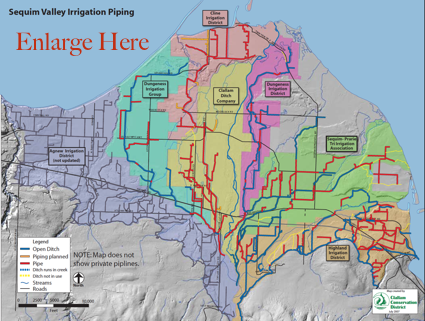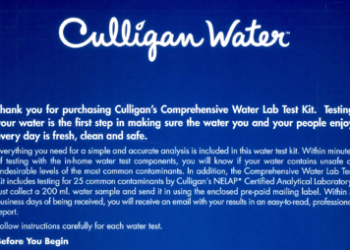Do you know about the Sequim irrigation districts? If you plan to buy property in the Sequim area that is located in a Sequim irrigation district, you may want to know which district. Here’s a sweet map of the Sequim irrigation districts and their boundaries with color coded legends that tells you if the irrigation lines are open ditches or pipes. Washington is beginning to regulate the use of residential water, even private wells, and that makes property that has access to irrigation water much more valuable. Only a small percentage of properties in the Sequim and Port Angeles have irrigation water.
Sequim Irrigation Districts in Demand
Washington has passed a new Water Management Rule, and certain areas on the Olympic Peninsula are covered by the Water Management Rule. Within this area there will be limits on how much water you can pull out of your own well, and the government intends to measure how much water is used on these private wells. Fees will be assessed for people who use more than their allotment. But properties within Sequim irrigation districts have another source of water for five months of the year. Irrigation water typically runs from May through September. If you plan to water plants or fields or an orchard or flowers or animals during those hottest months of the year, irrigation water is a life saver.
Sequim Irrigation Districts
Since there are not many properties in Sequim irrigation districts that are for sale, irrigation properties are undoubtedly going to be in greater demand in the future. They already are. I predict that homes in Sequim irrigation districts will soon demand a premium.
Last Updated on September 21, 2019 by Chuck Marunde






























I am having a home built in the Cedar Ridge Community. The realtor said our underground lawn sprinklers could be connected to an irrigation water supply. Can you tell me who can give me more information? I am guessing there is a valve near my house. Dale
Dale, the location of a connection for irrigation water and where that connection is located is unique to each irrigation district. There is no standard, so the best way to find out is to either have your Realtor find out or get the point of contact for the irrigation district and talk to them directly.
Karen, that is a very involved subject. A Google search for phrases like “Recharge Acquifers in Clallam County” reveal massive studies and reports, one 145 pages long. They are full of language that could only have been written by Ph.Ds. For example:
“Artificial aquifer recharge (AR) is the enhancement of natural ground water supplies using man-made conveyances such as infiltration basins or injection wells. Aquifer storage and recovery (ASR) is a specific type of AR practiced with the purpose of both augmenting ground water resources and recovering the water in the future for various uses. This pages explains general use of AR/ASR and the how the EPA UIC program regulates these injection activities to protect underground sources of drinking water (USDWs).”
The more one studies, the more confusing it can be, and I have a doctor of jurisprudence myself. I think the bottom line is that the “experts” have determined that certain areas are in need of water management, and that includes managing the water that is drawn from the surface and subsurface by humans, and the water that humans cause to flow over and across land, including irrigation ditches.
A warning tag does not tell us anything specific, except that a property owner is going to have to have a conversation with a county expert to find out what meaning they attach to it and what is required of a property owner, or what activity will now be prohibited.
I’ve noticed the county has placed warning tags on some properties in Sequim regarding Critical (or non-critical) Recharge Acquifers. Can you comment on these tags and what they mean to the homeowner?